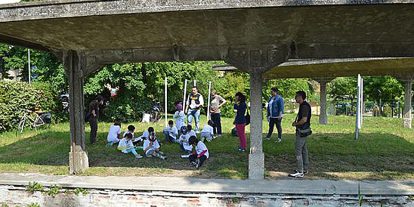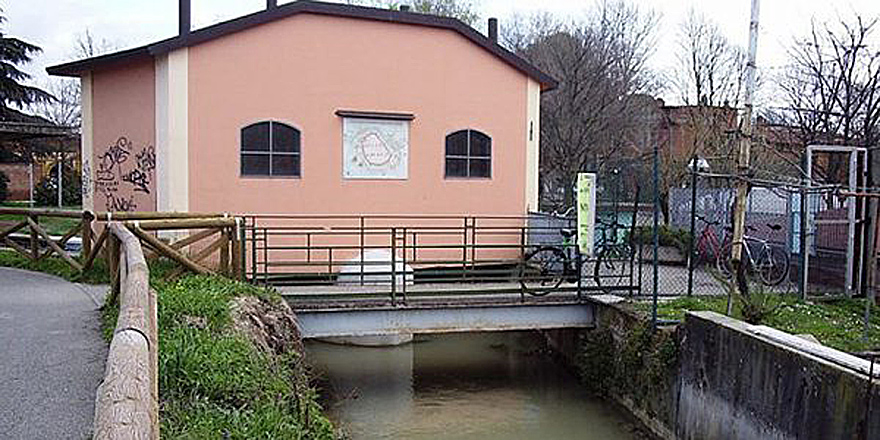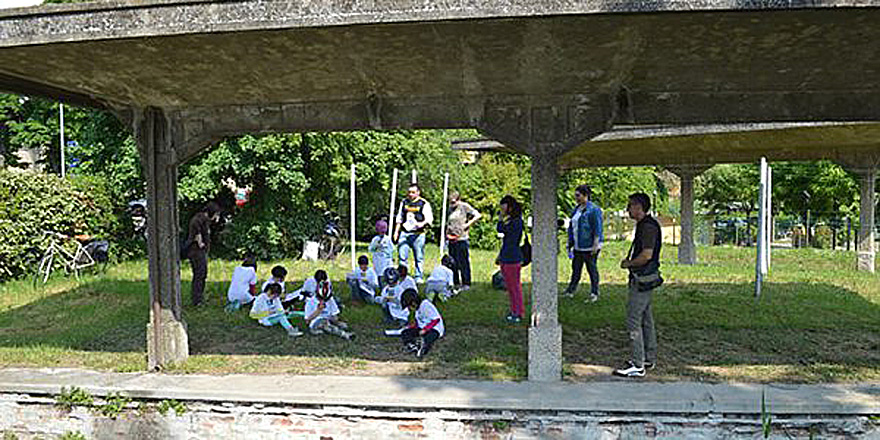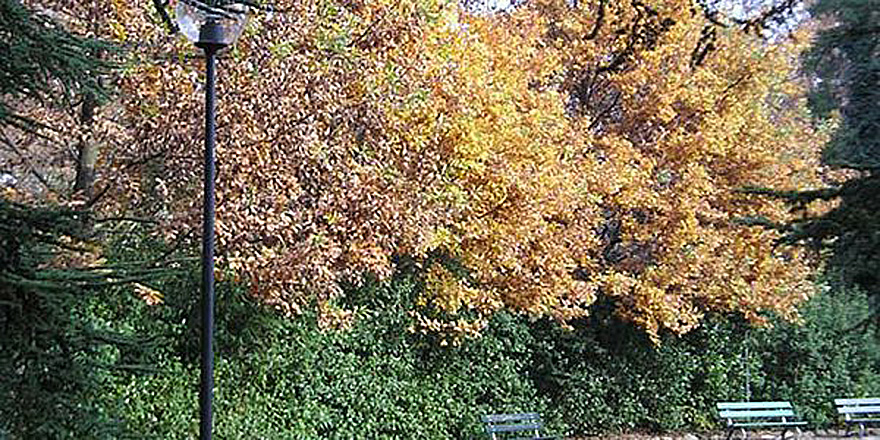A flight through nature with Leonardo
We’re in the race track area… can you see the great trees around it?
Perhaps not everyone knows that these imposing trees are part of a park, the Acque Minerali mineral water park. Why ‘water’ and why ‘minerals’? Because a few centuries after I left Imola, in 1830, doctor Gioacchino Cerchiari found four mineral water springs, two with iron and two with sulphur, with healing properties and so a park was built around them.
Follow me and we’ll meet Arturo, a cute little elephant and a descendant of those prehistoric mammals who lived in this area who will help you discover the geological route. And this way we’ll see the yellow sands or Imola sands. These are ancient beaches on which mollusc shells brought by the sea and elephant, deer, hippopotamus and rhinoceros bones dragged in by swollen rivers were deposited. It was Giuseppe Scarabelli who first came across these fossils around 150 years ago and they are now kept in the museum dedicated to him.
Do you want to see Imola’s water courses? Then follow me!!
The city centre is encircled by a canal, the Canal of the Mills. Now in the area nearest the city it is largely covered over but when I traced it on a map it was completely visible and Imola looked like an island inside this water crown. You can see it near the historic Santa Cristina mill (which was already there in my day), a short distance from the Sforza Castle, and you can cycle along it on the city’s cycle tracks and move on from it to another watercourse, the Santerno river. In Roman times it was called Vatreno and was navigable on the plains and perhaps all the way to the sea. This can’t be done any more but you can walk or cycle along its banks and look at the plants and animals which populate it or sit on the grass and have a snack with friends.
Do you still want to come with me? This time we’ll make my car into a flying machine and we’ll go to Parco Tozzoni. Seen from the air the park is a sequence of woods and meadows linked by easy footpaths. Centuries-old oak trees belonging to the original forest alternate with cedars, spruces, pines and sequoias which were planted by the former owners, the Tozzoni family, who wanted to build a summer residence here.
And now let’s direct the bow of our flying machine to the Bosco della Frattona nature reserve, a unique place in which to immerse yourself in the landscape of the past. This wood is in fact one of the last surviving parts of the ancient forest which once covered the hillsides. Let’s land a moment to enjoy and discover this undisturbed habitat so close to the city. If we go for a stroll we can see the trees and shrubs which make it up and discover the signs of the presence of its inhabitants and listen to their noises in the silence.




